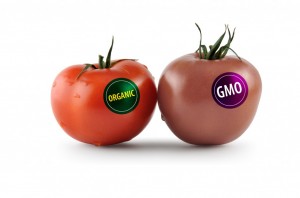Laws requiring GMO labeling of foods that contain the are on the ballot in next week’s election in Washington state. It’s unclear how much its chances of passes since food companies have contributed more than $20 million toward its defeat.
Whatever happens in Washington state, most states do not require GMO labeling, and, while I think it is possible we will eventually win this war, the individual battles remain to be fought. It’s going to take some more time.
In the meantime, you can take the bull by the horns and do your own detective works to identify foods likely to contain genetically modified organisms (GMOs):
- Buy organic: Anything non-organic that contains corn, soy, cottonseed or canola is likely to contain GMOs. This includes almost all processed foods. Carefully read labels for ingredients like high fructose corn syrup (which you want o avoid in any case), soybean oil and canola oil. Soy lecithin, an emulsifier even added to so-called “healthy” foods like soy protein and, texturized vegetable protein, mixed tocopherols (vitamin E) and food starch are also likely to contain GMOs.
- Look for the PLU code on fruits and vegetables: Avoid produce with code than begin with “8.” This does not mean that they are definitely GMO, but they are more likely to be. Five-digit PLUs that begin with “9” are organic foods that cannot by law contain GMOs. Look for cane sugar or evaporated cane juice to avoid GMOS is 90% of all sugar beets produced in the U.S. Better yet, avoid sugar altogether. Sugar is addictive and destroys health. Pure stevia extract and xylitol are safe sugar substitutes.
- Avoid artificial sweeteners: GMOs are one more reason to get artificial sweeteners out of your diet. Aspartame, which goes by the trade names Equal, NutraSweet and AminoSweet, is produced using GM bacterial strains of E. coli, which means it, too, is a GMO. Anything containing aspartame is a no-no when it comes to food.
- Watch out for ambiguous additives: Xanthan gum, citric acid and maltodextrin are among the common GMO offenders. Many common food texturizing agents, flavor enhancers, thickeners, sweeteners, and fortifiers are also derived from GMOs. Some of the more common offenders include xanthan gum, citric acid,
maltodextrin, lactic acid, dextrose, caramel color, baking powder, malt syrup, modified food starch, mono and diglycerides, sorbitol, stearic acid, and triglycerides.
5. Organic dairy only: Dairy products that are non-organic, or that do not contain a “No rBGH” label are likely to contain GMOs. Dairy products specifically labeled as certified organic, or not containing the artificial growth hormone rBGH, which is sometimes labeled as rBST, are OK. rGBH is recombinant bovine growth hormone, created using GMO E. coli just like aspartame, and it’s used in virtually all conventional dairy production. This means that all non-organic yogurt, cheese, butter, milk and ice
cream that does not specifically bear a “No rBGH” label of some sort is likely made with GMOs. Non-organic dairy cows are also likely fed GM feed, which means your best bet is to stick only with certified organic or non-GMO dairy products at all times.
6. Look for the Verified Non-GMO label: The Non-GMO Project has developed a certification program for food manufacturers to uniformly label products as GMO-free. A list of certified GMO-free products is available at the Non GMO Project website.








Comments are closed.